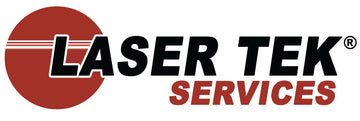By all indications the future points to digital-printing as the major technology that will be relied on. In fact, forecasts are abuzz that reliance on offset printing will fall by over 10.2% across the globe. Digital-printing meanwhile will grow by 68.1% by volume (Smithers Pira).
Decline of Offset Printing. The reasons behind the decline of offset printing vary for each printer buyer. However, productivity and reliability seems to be the major factors that drive print buyers to go digital. The only positive aspect that makes offset printing popular is the affordable printing costs which have since ceased to be a factor.
Did you know that you can reuse empty toner cartridges for another printing cycle? Recycle. Refill. Save! has got you covered on the basics of toner cartridge recycling.
Fast print delivery and if possible, no turn-around time for jobs is preferred. Offset printers cannot support this requirement. Print preparation from concept to platemaking consumes a lot of time besides being labor intensive. This becomes a huge disadvantage of offset printing. To reduce print costs print buyers must order in bulk and minimum print orders are placed in hundred copies or cheaper by the thousands.
Rise of Digital Printing. The rise of digital printing is a breath of fresh air for most print buyers. Digital printing promises to be a better printing alternative. Concepts are now laid out directly into the computer, giving rise to digital visuals every step of the way. The process of digital printing is so convenient that there is absolutely no turn-around time for print jobs. Even if the cost per copy is a bit higher for digital printing the set-up cost is absolutely very minimal.
Cost parameters Offset versus Digital Printing. For short run documents, digital printing is advisable because cost per copy is really cheap. However for documents that require over 2,500 copies, offset printing is cheaper. For instance digital printing 200 copies for a 32-page document costs $2,121, in comparison offset printing is at $3,818. But when printing 2,500 copies, offset printing comes in at $4,780 against that of digital at $18,014. There is really a huge difference in costs, concluding that print buyers are better off with offset lithography when print requirement exceeds a reasonable level. Since the majority of print buyers have sporadic with print requirements that are far in between; this raises the prospect of a digital printing future. Offset print shops then become secondary and only serve the possibility of bulk orders happening once in a while.
Reuse empty toner cartridges and save as much as 80% on printing costs. Visit http://www.lasertekservices.com and shop for the toner refill kit compatible with your cartridge.
A digital printing future looms in the horizon. Positive forecasts reveal that the digital print market will reach $187.7 billion by 2018. Even at this growth aspect, digital printing can only take a lion’s share of the industry. It will never replace offset lithography entirely because demand for bulk orders will always be around.





